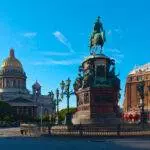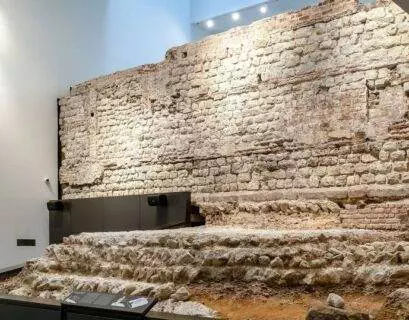Introduction
In the ancient land of Turkey, where the Euphrates River once flowed peacefully, a remarkable discovery has brought a piece of history back to life. Imagine journeying through time to a world where statues held deep meaning and told stories of long-lost civilizations. Today, we uncover the story of a 3000-year-old female statue, a puzzle piece from the past that is captivating minds and sparking curiosity.

The Euphrates region, nestled in the heart of Turkey, is like a treasure trove of stories waiting to be unearthed. This ancient land holds secrets of its past, when powerful empires rose and fell, leaving behind evidence of their existence in the soil. The Euphrates River once served as the lifeblood of this region, carrying water as well as dreams, aspirations, and creativity among its residents.
Statues, those frozen forms of art, have always been more than just stone and metal. They are windows to the past, reflections of cultures that have long since faded into history’s tapestry. In ancient times, statues were not mere decorations; they were storytellers, capturing the essence of people, beliefs, and aspirations. These statues served as bridges between the mortal realm and the divine, representing gods, rulers, and heroes.
Description of Statue
Imagine a statue, standing in dignified silence, its form a testament to the skill of ancient craftsmen. This statue, discovered on Turkish soil, offers a glimpse into a world that once thrived. Carved from enduring basalt, the statue’s dimensions are striking—a head and upper torso measuring a grand 11 metres in length and 0.7 metres in width. Imagine standing alongside an Iron Age statue that towered over us as an emblem of power and presence from a period marked by transformation and change. Essentially, this statue dates back to an Iron Age figure who would have stood close by our side a millennium ago! It’s as if the sculptor’s hands froze a moment in time, capturing the very essence of a culture that dared to dream big.
Historical Era During Which the Statue Was Sculpted:
As we move back through history, we arrive in the Iron Age—an era marked by massive transformation and change. Spanning from around 1000 BC to 538 BC, it witnessed new civilizations emerge alongside crumbling empires. Imagine living in an environment in constant flux where societies had to adjust to new ideas, technologies, and lifestyles in order to thrive.
The statue we’ve discovered dates back to the Iron Age, an era when people no longer accepted the status quo and sought change through exploration, pushing boundaries, and welcoming change. When seen against this background, its existence takes on new significance as a representation of a society looking forward and carving its own mark into history with every stroke of the chisel.
Unveiling the Mysteries:
As we examine history’s secrets, we discover a statue that defies easy categorisation. Who was the woman depicted in stone? Was she a queen, goddess, or respected matriarch? The answer seems to lie within its depths, waiting to be discovered by curious minds who can put together its pieces.
In the following chapters, we’ll delve deeper into the story of this enigmatic statue. We’ll investigate its discovery, the clues it provides about past cultures, and the questions raised about women in ancient societies. Join us as we uncover its mysteries! Come with us as we uncover its story, long hidden away for millennia, before finally sharing its tale with the world!
Artistic Features
Imagine gazing upon the statue, its features carved with care and precision, telling a tale of artistry from centuries past. The style of this masterpiece reflects the skilled hands that brought it to life—a style that draws inspiration from the dreams and beliefs of a culture now distant but not forgotten.
The influences that shaped this statue are like threads woven into a rich tapestry. Just as the river’s currents shape the land it touches, so too did the currents of culture and time shape the hands of the artist. They drew inspiration from the world around them, infusing the statue with a uniqueness that transcends time.
The artist behind this creation remains a mystery; their name is lost to the ages. Yet their legacy lives on through the statue’s form. Imagine the dedication and passion that flowed from their hands into the stone, a testament to the power of human creativity.
Unique Elements That Set the Statue Apart
Statues stand out amongst a sea of stones and silence as notable landmarks, drawing people’s eyes towards them for more than just their size; their details make each statue truly one-of-a-kind. Imagine the ring of curls that adorn the figure’s head, a touch of individuality that sets it apart. The shawl that covers her head, shoulders, and back speaks of a culture that valued tradition and grace.
What truly sets this statue apart is the intentional defacement it bears. The face and chest, once detailed with care, were ritually defaced in antiquity. This act adds an air of mystery, leaving us to wonder about the reasons behind such a deliberate action. It’s as if time itself has woven an additional layer of intrigue into the fabric of history.
Importance in Cultural Context
As we peer back through time, we begin to appreciate the statue’s cultural context and understand its importance in it. Beyond being just an artistic work, this statue also served as a link between mortal life and divine reality, playing an essential part in the rituals and religious practises of ancient world cultures. They stood as conduits between people and gods, vessels of reverence and connection.
Imagine the statue’s presence in ceremonies, a symbol of the community’s faith and devotion. As the statue watched over these rituals, it carried with it the hopes and prayers of those who gathered. It served as a physical representation of the beliefs that held communities together, a reminder of the bonds between humans and the forces they revered.
This importance extended beyond rituals, seeping into folklore and tradition. As tales were passed from generation to generation, the statue’s presence became part of daily life, adding layers of meaning that made it more than just a statue—it became part of community identity and life itself.
Unlocking the Past
With each detail we explore, the statue’s story becomes more vibrant and real. It’s as if the stone itself has come to life, whispering tales of a bygone era. In the following chapters, we’ll delve deeper into the cultural background surrounding our statue. We will travel through its rituals, traditions, and stories that brought it to life; while simultaneously trying to untangle any mystery that still clings. So come back in time with us as we peel back layers of history to explore an iconic monument!
Discovery and Preservation
The story of the statue’s discovery is like a page torn from an adventure novel—a tale of determination and uncovering hidden treasures. Imagine the year 2017, when a team of archaeologists from the University of Toronto embarked on an excavation at the ancient site of Tayinat, Turkey. As they sifted through layers of soil, they stumbled upon a treasure that had been buried for centuries—the majestic female statue.
It was not a straightforward discovery; instead, it was a journey of patience and precision. Careful excavation revealed the statue’s form, its presence emerging from the depths of time. As the team unearthed this masterpiece, they found themselves face-to-face with a puzzle that spanned millennia.
Preserving the statue was no small feat. Imagine the delicate work that went into protecting the statue’s fragile form as it saw the light of day once again. The remnants of the past required careful handling, ensuring that the story they held was not lost to the passage of time. The archaeologists worked tirelessly, using their expertise to piece together fragments and restore the statue to its former glory.
Current Location
Today, the statue embarks upon an exciting new phase in its journey-one where it shares its story with all. Imagine standing before this statue, as its presence marks an event from history still present today. Fortunately, those looking to learn from history can now appreciate its significance.
Imagine standing before it in wonder and contemplating its story; now imagine being part of a museum where ancient cultures come alive through its walls! Imagine this and feel how visitors must feel! The museum serves as a bridge between past and present; where ancient cultures come alive again through exhibits that bring them alive!
Accessibility is at the core of this venture. Think about all the effort put forth to ensure that this statue doesn’t just become another locked-away relic; rather, it becomes part of history for all who wish to view it. Museums open their doors to curious minds, enabling them to step into the shoes of those who lived thousands of years ago, becoming teachers themselves through statues.
A Brief Look at the Past:
As we finish up our excursion through the narrative of this exceptional sculpture, envision the effect it has on the individuals who experience it. It’s something beyond a sculpture— an entryway to a world that used to be, a window into the fantasies and yearnings of individuals who lived in a period we can barely comprehend. The sculpture’s excursion, from stowed away artefact to public fortune, helps us to remember the significance of safeguarding history and giving it to people in the future.
Interpretations and Theories
As we delve into the realm of interpretations and theories, imagine the statue as a canvas on which scholars and thinkers paint their ideas. The meaning behind the statue is a puzzle that has captured the imagination of experts from around the world. Some believe that the statue represents a divine figure, a goddess revered by ancient communities. Others speculate that it could depict a historical person—a queen, a wife, or a matriarch who played a pivotal role in the society of her time.
Think of the statue as a mirror reflecting the myriad possibilities that history offers. Each theory carries its own weight, inviting us to consider the stories that could be hidden within the stone. The statue’s intentional defacement raises intriguing questions—was this an act of reverence, an offering to the gods, or a deliberate attempt to erase a memory?
Impact on Modern Understanding:
Discovering this statue is like unlocking doors to an ancient world that’s long since been forgotten, opening our minds up to new perspectives of history and culture from long ago. Imagine its effect on modern understandings of history and culture! It challenges preconceived notions while encouraging us to view ancient societies from fresh angles; in particular, the fact that women had significant roles in politics and religion during ancient societies will radically reshape what has been written as history in recent decades.
Think of the statue as a connecting force between generations, reminding us to remember all their aspirations and struggles as part of history’s tapestry woven from an infinite number of threads, each thread being an opportunity for storytelling.
Conclusion
As we near the conclusion of our journey, let’s think back on its significance throughout time. More than just art, a statue’s significance stands as a testament to human creativity, resilience, and an insatiable thirst for knowledge. From its initial creation through its evolution over centuries and now into today, it is an unsurpassed feat of preservation and curiosity.
Statues serve as beacons in art and history, reminding us to explore, question, and appreciate every piece of our past that bears witness to its rich past. They encourage us to consider, appreciate, and celebrate its beauty, which remains unchanged by time.
As we bid farewell to the statue, imagine the legacy it leaves behind. It has sparked our imaginations, prompting us to peer beyond the surface of stone and see the people and stories it represents. The statue whispers to us, reminding us that history is not a distant echo but a living connection.





